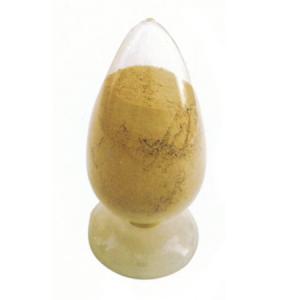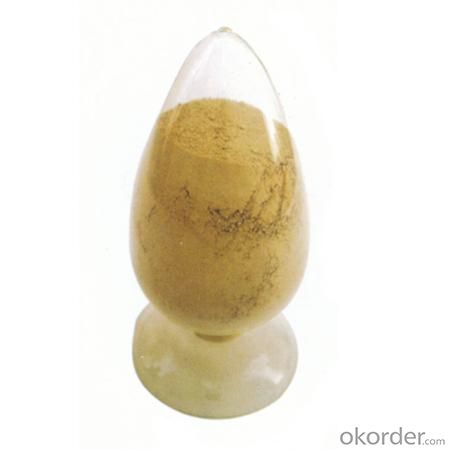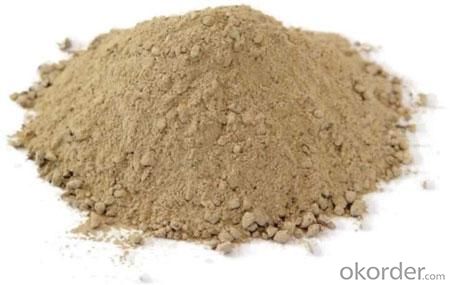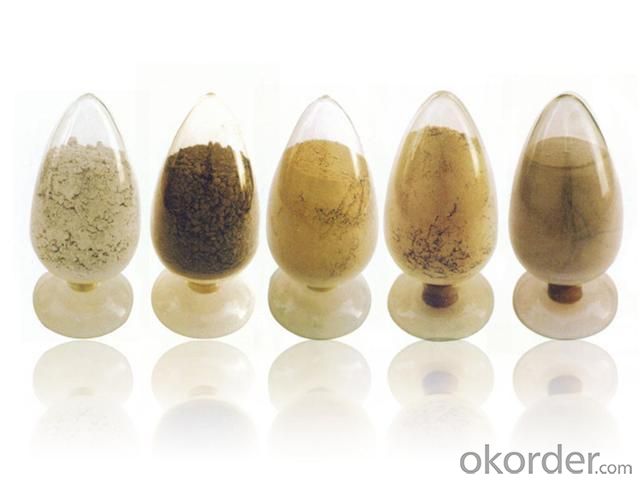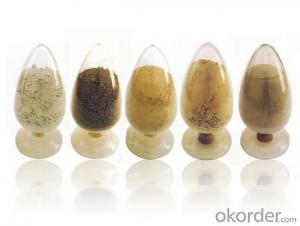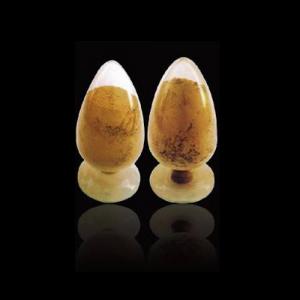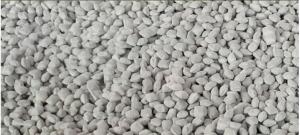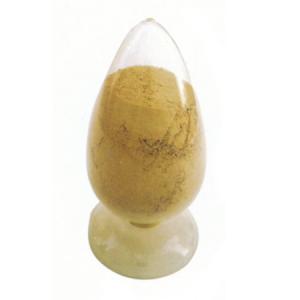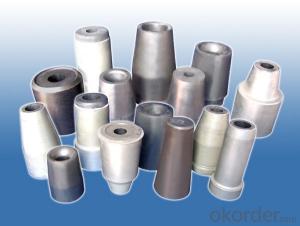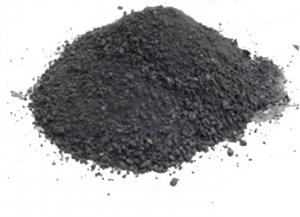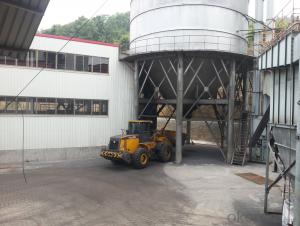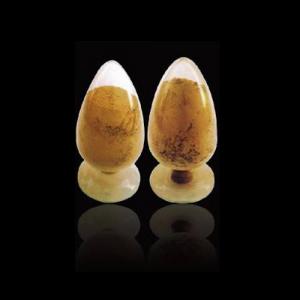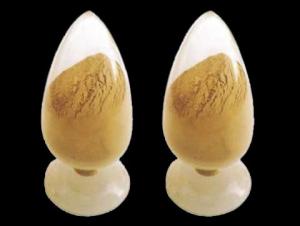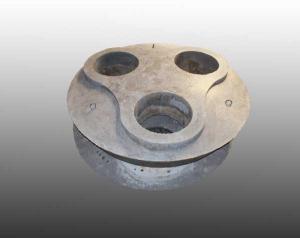Monolithic Refractories Magnesium Calcium Gunning for Ladle and Tundish for Iron and Steel Industry
- Loading Port:
- China Main Port
- Payment Terms:
- TT or L/C
- Min Order Qty:
- 2 MT m.t.
- Supply Capability:
- 5000 Tons Per Month m.t./month
OKorder Service Pledge
OKorder Financial Service
You Might Also Like
General Information of Magnesium Calcium Gunning for Ladle and Tundish
Made as per international standards, ALRE magnesium calcium gunning forladle and tundish is known for its excellent corrosion resistance, long operating life and high refractoriness.
Technical data of Magnesium Calcium Gunning for Ladle and Tundish
Item | Magnesium Calcium Gunning | |||
CPL-1 | CPL-2 | |||
Al2O3(%)≥ | — | — | ||
MgO(%)≥ | 75-80 | 70-80 | ||
CaO(%)≤ | 5-10 | 2-10 | ||
SiO2(%)≤ | 4 | 10 | ||
SiO2+ Fe2O3+ Al2O3(%)≥ | ||||
Bulk Density (g/cm3)≥ | — | — | ||
C.C.S. (MPa) ≥ | 110℃×24hrs | — | — | |
1500℃×3hrs | — | — | ||
M.O.R.(MPa) ≥ | 110℃×24hrs | — | — | |
1500℃×3hrs | — | — | ||
Refractoriness (℃) ≥ | 1790 | 1790 | ||
Grain Size (mm) ≤ | — | — | ||
Permanent Linear Change(%) | 1500℃×2hrs | — | — | |
1500℃×3hrs | — | — | ||
Life time (hr) | — | — | ||
Production line and Packing of Magnesium Calcium Gunning for Ladle and Tundish
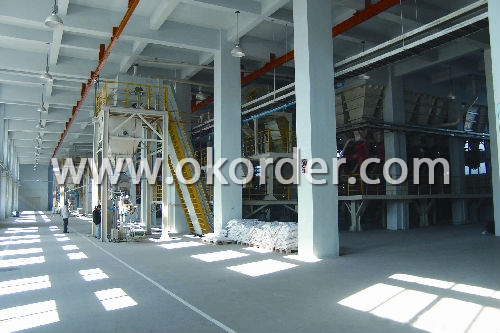
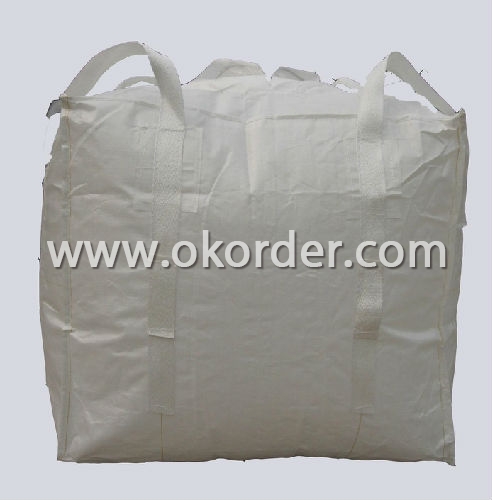
Feature of Magnesium Calcium Gunning for Ladle and Tundish
Long operating life
High refractoriness
Excellent corrosion resistance
Application of Magnesium Calcium Gunning for Ladle and Tundish
ALRE magnesium calcium gunning forladle and tundish can be used widely in steel and iron industry.
- Q: How do monolithic refractories resist abrasion in the iron and steel industry?
- Monolithic refractories in the iron and steel industry resist abrasion through their inherent properties and design features. These refractories are formulated with high levels of abrasion-resistant materials such as alumina, silicon carbide, and zirconia, which provide excellent resistance to wear and erosion caused by the movement of molten metal, slag, and other abrasive materials in the production processes. Additionally, the monolithic nature of these refractories eliminates the presence of joints and gaps, reducing weak points and enhancing their ability to withstand abrasion.
- Q: How do monolithic refractories improve the lining of converters and refining vessels?
- Monolithic refractories play a crucial role in improving the lining of converters and refining vessels in several ways. Firstly, monolithic refractories offer excellent thermal insulation properties, which helps in maintaining the desired temperature inside the converters and refining vessels. This is important because high temperatures are required for various metallurgical processes to occur effectively. Secondly, monolithic refractories have high chemical resistance, which is vital in the harsh conditions of converters and refining vessels. These vessels often come into contact with corrosive materials and aggressive slags, and the monolithic refractories prevent the lining from deteriorating or being eroded by these substances. Moreover, monolithic refractories provide superior mechanical strength and stability, ensuring that the lining remains intact even under high operational stresses. This is especially important in converters and refining vessels where there are frequent mechanical movements and thermal expansions. Additionally, monolithic refractories offer easy installation and repair. Unlike traditional bricks, which require time-consuming and complex assembling, monolithic refractories can be applied as a single mass, reducing downtime during installation or repair. This feature saves both time and cost in maintaining the lining of converters and refining vessels. Overall, the use of monolithic refractories in the lining of converters and refining vessels significantly enhances their performance and longevity. They provide excellent thermal insulation, chemical resistance, mechanical strength, and ease of installation and repair, ensuring efficient and reliable operation in the metallurgical processes.
- Q: What are the key characteristics of monolithic refractories for electric arc furnace applications?
- The key characteristics of monolithic refractories for electric arc furnace applications include excellent thermal shock resistance, high erosion and corrosion resistance, good mechanical strength, and the ability to withstand high temperatures and aggressive chemical environments. Monolithic refractories also offer easy installation and maintenance due to their shape versatility and ability to be cast or gunned into place, ensuring optimal performance and longevity in electric arc furnace operations.
- Q: What are the specific requirements of monolithic refractories for blast furnace applications?
- Monolithic refractories used in blast furnace applications have specific requirements to withstand the harsh conditions and high temperatures within the furnace. Some of these requirements include: 1. Thermal stability: Monolithic refractories need to have excellent thermal stability to withstand the extreme temperatures encountered in blast furnaces. They should resist thermal shock and maintain their physical and chemical properties at high temperatures. 2. High strength: Blast furnace conditions exert significant pressure and mechanical stress on refractory linings. Therefore, monolithic refractories need to have high strength and resistance to mechanical wear to withstand the weight of the burden and the movement of materials inside the furnace. 3. Chemical resistance: Blast furnace environments are highly corrosive due to the presence of molten metals, slag, and gases. Monolithic refractories should exhibit excellent chemical resistance to prevent chemical reactions with the molten material and gases, which can lead to refractory degradation. 4. Erosion and abrasion resistance: The materials being processed in a blast furnace can cause erosion and abrasion, leading to wear of the refractory lining. Monolithic refractories used in blast furnaces should be able to withstand these erosive and abrasive forces to ensure a longer service life. 5. Low porosity: Blast furnace refractories should have low porosity to minimize the penetration of molten materials and gases, which can cause refractory spalling and damage. Low porosity also helps in maintaining the thermal stability and overall performance of the refractory lining. 6. Dense structure: The refractory lining in a blast furnace should have a dense structure to prevent the penetration of molten slag and metal into the lining, which can cause refractory failure. A dense structure also aids in the refractory's heat insulation properties. 7. Easy installation: Blast furnace refractories need to be easily installed and repaired due to the frequent maintenance and repair requirements of blast furnaces. Monolithic refractories offer the advantage of easy installation, as they can be cast, gunned, or sprayed onto the refractory surface, allowing for quick repairs and reduced downtime. Overall, the specific requirements of monolithic refractories for blast furnace applications include thermal stability, high strength, chemical resistance, erosion and abrasion resistance, low porosity, dense structure, and easy installation. Meeting these requirements ensures the durability and efficiency of the refractory lining, leading to improved blast furnace performance.
- Q: How do monolithic refractories enhance the performance of ladles and tundishes?
- Monolithic refractories play a crucial role in enhancing the performance of ladles and tundishes in several ways. Firstly, monolithic refractories are known for their high thermal stability and resistance to thermal shock. Ladles and tundishes are subjected to extreme temperatures and thermal cycling during the process of molten metal transfer. Monolithic refractories provide excellent insulation and structural integrity, ensuring that the ladles and tundishes can withstand these harsh conditions without experiencing cracking or failure. Furthermore, monolithic refractories offer exceptional corrosion resistance. In the ladle and tundish environments, molten metal, slag, and other chemicals can cause corrosion and erosion of the lining. Monolithic refractories are designed to resist these corrosive agents, extending the service life of ladles and tundishes and minimizing the need for frequent repairs or replacements. Another advantage of monolithic refractories is their ability to form a tight and seamless lining. Unlike traditional brick or tile linings, which have joints that can deteriorate over time, monolithic refractories are typically applied as a single, continuous layer. This seamless lining significantly reduces the risk of metal and slag penetration, ensuring better containment of the molten metal and preventing contamination. Moreover, monolithic refractories offer versatility and ease of installation. They can be easily shaped and applied to various complex geometries, allowing for customized linings in ladles and tundishes. This versatility also enables faster installation and reduces downtime during maintenance and repairs. Overall, the use of monolithic refractories in ladles and tundishes contributes to improved performance, increased operational efficiency, and reduced costs. Their ability to withstand extreme temperatures, resist corrosion, provide a tight lining, and offer ease of installation makes them a preferred choice in the steel and foundry industries.
- Q: How are monolithic refractories used in the iron and steel industry?
- Monolithic refractories are used in the iron and steel industry for various applications such as lining furnaces, ladles, and tundishes, as well as repairing and maintaining the refractory linings. These refractories are often in the form of a dense, one-piece structure that can withstand high temperatures, thermal shocks, and chemical attacks from molten metals and slag. They provide insulation, corrosion resistance, and mechanical strength to the equipment and structures used in iron and steel production, ensuring efficient and reliable operations.
- Q: What are the advantages of using plastic refractories in the iron and steel industry?
- There are several advantages of using plastic refractories in the iron and steel industry. Firstly, plastic refractories offer excellent thermal insulation properties. They have low thermal conductivity, which means they can effectively retain heat and prevent excessive heat loss during the manufacturing process. This is crucial in the iron and steel industry as maintaining high temperatures is essential for the proper functioning of furnaces and other equipment. Secondly, plastic refractories have superior resistance to chemical attack and corrosion. They can withstand exposure to various chemicals, including molten metals and slag, without deteriorating or losing their structural integrity. This is especially important in the iron and steel industry, where materials come into contact with highly corrosive substances on a regular basis. Another advantage of plastic refractories is their ease of installation and repair. Unlike other refractory materials, plastic refractories can be easily shaped and molded into the desired form, allowing for precise fitting and quick installation. Additionally, they can be easily repaired or patched in case of damage or wear, which reduces downtime and maintenance costs. Furthermore, plastic refractories exhibit good mechanical strength and abrasion resistance. This enables them to withstand the physical stresses and mechanical forces present in the iron and steel industry, such as vibrations, impacts, and mechanical loading. Their high resistance to wear and tear ensures longevity and reduces the need for frequent replacements. Lastly, plastic refractories have a high thermal shock resistance. They can withstand rapid temperature changes without cracking or spalling. This is beneficial in the iron and steel industry, where materials are subjected to extreme temperature differentials, such as during the heating and cooling cycles of furnaces. In conclusion, the advantages of using plastic refractories in the iron and steel industry include excellent thermal insulation, resistance to chemical attack, ease of installation and repair, good mechanical strength, abrasion resistance, and high thermal shock resistance. These properties make plastic refractories an ideal choice for various applications in this industry, ensuring efficient and reliable operations.
- Q: What are the key considerations when selecting monolithic refractories for tundish applications?
- When choosing monolithic refractories for tundish applications, there are several important factors to take into account. Firstly, it is crucial to consider the refractory material's ability to withstand thermal shocks. Tundishes experience drastic changes in temperature as molten metal is poured in and drained out. If the refractory material is not resistant to thermal shocks, it will deteriorate quickly and fail, resulting in expensive repairs and downtime. Another important factor is the material's resistance to chemical attacks. Tundishes often come into contact with aggressive chemical environments due to the presence of molten metal and various slag compositions. The refractory material must be capable of enduring these corrosive elements and maintaining its integrity over time. Furthermore, the mechanical strength of the refractory material is essential. Tundishes are subjected to physical stresses, including the weight of the molten metal and the movement of the tundish itself. A weak refractory material is prone to cracking and failure, which can compromise the overall performance and lifespan of the tundish. The ease of installation and repair should also be taken into consideration. Monolithic refractories are typically cast or gunned in place, so it is important to select a material that can be easily applied and shaped to fit the tundish design. Additionally, if repairs are required, the refractory material should allow for patching or replacement without causing significant disruptions to operations. Lastly, cost is always a factor to consider. While it is important to choose a high-quality refractory material that meets the specific requirements of the tundish, the overall cost-effectiveness must be evaluated. This includes considering the initial material cost, installation and repair expenses, and the expected lifespan of the refractory. To summarize, the key considerations when selecting monolithic refractories for tundish applications are thermal shock resistance, chemical resistance, mechanical strength, ease of installation and repair, and cost-effectiveness. By carefully assessing these factors, one can choose a refractory material that will deliver optimal performance and durability in tundish applications.
- Q: How do monolithic refractories withstand high temperatures and thermal shocks?
- Monolithic refractories are able to withstand high temperatures and thermal shocks due to their unique composition and structure. They are made from a single, continuous material, which eliminates the presence of joints or seams that could weaken the refractory's integrity. This monolithic nature allows for better thermal conductivity and reduced heat transfer, enabling the material to withstand extreme temperatures without cracking or breaking. Additionally, monolithic refractories possess high thermal shock resistance, meaning they can withstand rapid temperature changes without experiencing significant damage. This resilience is achieved through the use of additives and bonding agents that enhance the material's ability to expand and contract uniformly, minimizing the risk of thermal shock-induced fractures. Overall, the cohesive design and specialized components of monolithic refractories enable them to endure high temperatures and thermal shocks more effectively than other refractory materials.
- Q: What are the challenges in repairing and maintaining monolithic refractories?
- One of the challenges in repairing and maintaining monolithic refractories is the difficulty in identifying and accessing damaged areas. Monolithic refractories are typically used in complex and intricate structures, making it challenging to locate and reach areas that require repair or maintenance. Another challenge is the high temperatures involved, as monolithic refractories are often exposed to extreme heat. This requires specialized expertise and equipment to ensure safe and effective repairs. Additionally, the composition and application of monolithic refractories can vary, making it essential to understand the specific type being used in order to perform accurate repairs and maintenance. Overall, the challenges lie in the complexity of the structures, the extreme temperatures, and the need for specialized knowledge and tools.
1. Manufacturer Overview
| Location | Henan, China |
| Year Established | 2007 |
| Annual Output Value | Above US$ 200 Million |
| Main Markets | North America;Asia;Western Europe;Africa;Russia;Middle East |
| Company Certifications | ISO 9001:2008 |
2. Manufacturer Certificates
| a) Certification Name | |
| Range | |
| Reference | |
| Validity Period |
3. Manufacturer Capability
| a) Trade Capacity | |
| Nearest Port | Tianjin |
| Export Percentage | 20% - 30% |
| No.of Employees in Trade Department | 10-20 People |
| Language Spoken: | English; Chinese |
| b) Factory Information | |
| Factory Size: | Above 150,000 square meters |
| No. of Production Lines | Above 10 |
| Contract Manufacturing | Installation guide, OEM Service Offered |
| Product Price Range | High; Average |
Send your message to us
Monolithic Refractories Magnesium Calcium Gunning for Ladle and Tundish for Iron and Steel Industry
- Loading Port:
- China Main Port
- Payment Terms:
- TT or L/C
- Min Order Qty:
- 2 MT m.t.
- Supply Capability:
- 5000 Tons Per Month m.t./month
OKorder Service Pledge
OKorder Financial Service
Similar products
Hot products
Hot Searches
Related keywords
